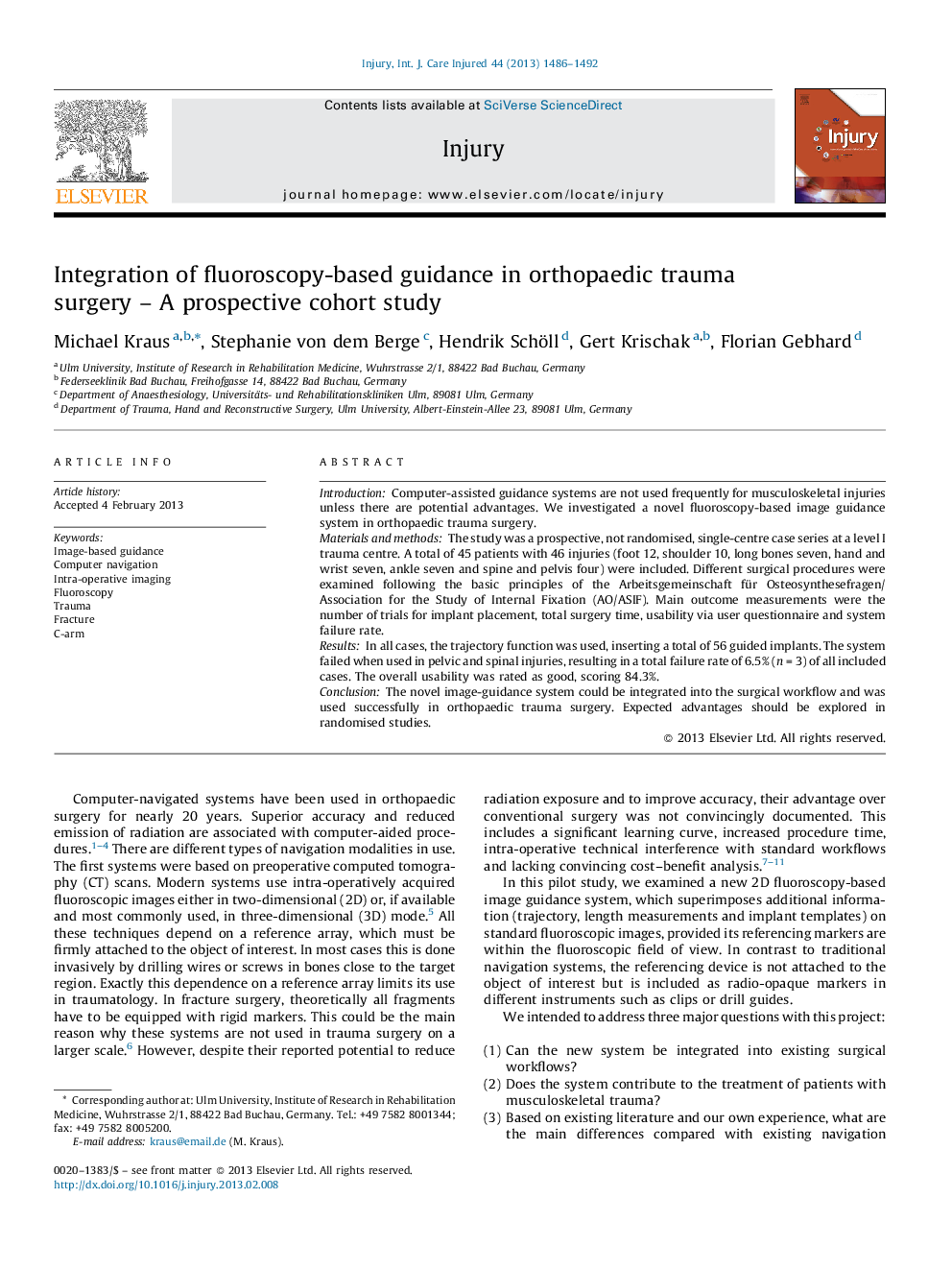| Article ID | Journal | Published Year | Pages | File Type |
|---|---|---|---|---|
| 6083979 | Injury | 2013 | 7 Pages |
IntroductionComputer-assisted guidance systems are not used frequently for musculoskeletal injuries unless there are potential advantages. We investigated a novel fluoroscopy-based image guidance system in orthopaedic trauma surgery.Materials and methodsThe study was a prospective, not randomised, single-centre case series at a level I trauma centre. A total of 45 patients with 46 injuries (foot 12, shoulder 10, long bones seven, hand and wrist seven, ankle seven and spine and pelvis four) were included. Different surgical procedures were examined following the basic principles of the Arbeitsgemeinschaft für Osteosynthesefragen/Association for the Study of Internal Fixation (AO/ASIF). Main outcome measurements were the number of trials for implant placement, total surgery time, usability via user questionnaire and system failure rate.ResultsIn all cases, the trajectory function was used, inserting a total of 56 guided implants. The system failed when used in pelvic and spinal injuries, resulting in a total failure rate of 6.5% (n = 3) of all included cases. The overall usability was rated as good, scoring 84.3%.ConclusionThe novel image-guidance system could be integrated into the surgical workflow and was used successfully in orthopaedic trauma surgery. Expected advantages should be explored in randomised studies.
